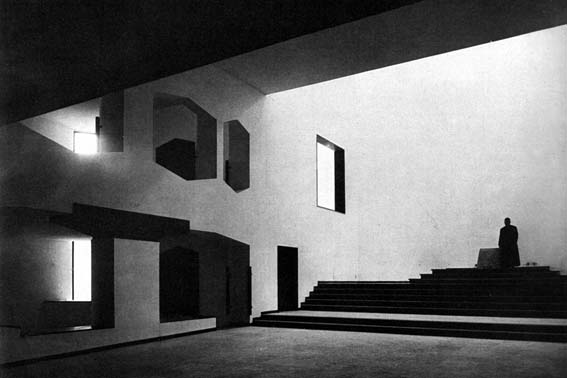La iglesia de la Sagrada Familia de Ludovico Quaroni en Génova
La búsqueda de la identidad
DOI:
https://doi.org/10.17979/aarc.2011.2.2.5063Palabras clave:
Iglesia, Sagrada Familia, Ludovico Quaroni, Génova, identidadResumen
La iglesia de la Sagrada Familia, proyectada por Ludovico Quaroni junto con Adolfo De Carlo, Andrea Mor y Angelo Sibilla en 1956, y construida en 1958/59, es un paradigma del modo de concebir el edificio cultual por parte de Quaroni: edificio al servicio de las almas y del barrio; monumento sacro y civil, no retórico.
Precisamente la relación muy estrecha entre el edificio y el barrio, constituye un factor importante de innovación en la arquitectura sacra del momento. Mediante esta lógica de inserción urbanística, Quaroni tiene éxito al alcanzar una perfecta identificación entre el edificio y el barrio, entre el edificio y la ciudad, en continuidad con la cual se ubica la iglesia. Identidad que, en el proyecto, se encuentra también entre la función, la forma y el significado del edificio: entre los contenidos y el continente, en todas las escalas.
El proyecto, en efecto, testimonia claramente la concepción unitaria que tenía Quaroni de la arquitectura y del proyecto, orientado hacia la construcción de una estructura en la cual los componentes de la triada vitrubiana fuesen «no sólo incluidos, sino necesariamente fundidos, integrados y disueltos en la arquitectura resultante», dirigida hacia «una sola idea representativa y sólida, que impacte, que sea arrebatadora y que nazca prácticamente —en apariencia— de la lógica interna y de la interpretación del lugar, elaborada tanto como para llegar a ser elegante, excelente, muy refinada».
Desafortunadamente, el edificio se ha realizado de modo incompleto y, como tal, no ha materializado la idea del proyecto, ni en su integración en el barrio, ni en su relación entre forma, función y significado.
Al no percibirlo ni como obra de arte, ni como lugar sacro, sus usuarios lo han modificado a lo largo de los años para adaptarlo a las exigencias que habían ido surgiendo, sin la debida atención a la arquitectura, con una pérdida progresiva de legibilidad de la misma.
La intervención de restauración arquitectónica y de adaptación litúrgica prevista —proyectada por mí— se halla en curso de realización parcial, y tiene el objetivo de hacer posible (como sucedía en el proyecto de Quaroni) la unidad de los distintos componentes de la arquitectura, de modo que esta iglesia se pueda expresar finalmente por completo ella misma, por dentro y por fuera, como iglesia aquí y ahora.
Descargas
















